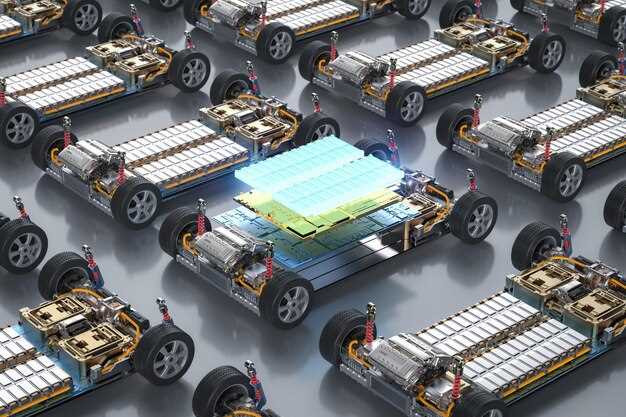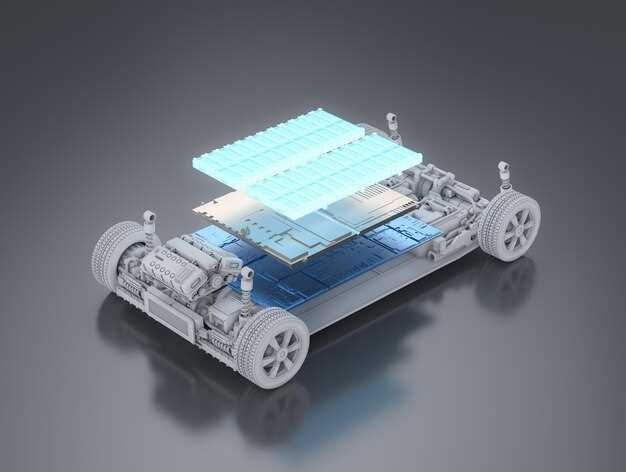
The automotive industry is undergoing a significant shift with the advent of electric vehicles (EVs). One of the most promising innovations driving this transition is the development of solid-state batteries. These batteries represent a breakthrough in battery technology, offering superior performance compared to traditional lithium-ion batteries commonly used in today’s EVs.
Solid-state batteries differentiate themselves by utilizing a solid electrolyte instead of a liquid one. This fundamental change enhances energy density, increases charging speed, and significantly improves safety. As the demand for more efficient and sustainable electric vehicle solutions grows, the need for advanced battery tech becomes increasingly critical.
Moreover, the transformation brought by solid-state batteries could lead to a reduction in the overall cost of EV production, making electric vehicles more accessible to consumers. With improved energy storage capabilities, these batteries can support longer ranges and facilitate the wider adoption of EV technology. As automakers invest in research and development, solid-state batteries may soon become the standard in electric vehicle technology, changing the landscape of the automotive market forever.
Comparative Analysis of Solid-State and Lithium-Ion Batteries in EVs
In the evolving landscape of electric vehicles (EVs), the technology powering them is as crucial as the vehicles themselves. Solid-state batteries emerge as a promising alternative to traditional lithium-ion batteries, addressing several key limitations of the latter. This analysis explores the fundamental differences and advantages of solid-state batteries over lithium-ion counterparts in the context of EV technology.
Solid-state batteries utilize a solid electrolyte instead of the liquid or gel electrolytes found in lithium-ion batteries. This fundamental shift enhances safety, as solid materials are less prone to leakage and thermal runaway, significantly reducing the risk of fire associated with lithium-ion batteries. Additionally, the stability of solid-state technology leads to improved longevity and cycle durability, making it a more reliable choice for EV applications.
Energy density is another critical factor where solid-state batteries have the upper hand. With the potential to achieve higher energy densities, solid-state batteries can store more energy in the same volume, enabling EVs to travel longer distances on a single charge. This advantage directly addresses one of the major concerns of EV users – range anxiety. As manufacturers strive to enhance performance, solid-state technology could represent a substantial leap forward in range capabilities.
The charging speed also highlights a significant difference. Solid-state batteries can facilitate faster charging times due to their superior conductivity. In contrast, lithium-ion batteries often face limitations in charging rates, which can be a crucial consideration for EV users seeking convenience. Reducing charging time can make EVs more appealing to a broader audience.
However, there are challenges to the widespread adoption of solid-state batteries. Currently, the manufacturing processes for solid-state batteries are not as mature as those for lithium-ion technologies. Cost is a significant barrier; at present, solid-state batteries are more expensive to produce, which could hinder their immediate implementation in mass-market EVs. As research and development progress, these costs are expected to decrease, potentially accelerating their adoption in the future.
In conclusion, the comparative analysis of solid-state and lithium-ion batteries underscores a shift in EV technology that could redefine the automotive landscape. While solid-state batteries offer superior safety, energy density, and charging capabilities, the current manufacturing challenges present hurdles that need to be overcome. As advancements in solid-state tech continue, the transition towards these batteries could result in more efficient, safer, and longer-range electric vehicles.
Challenges in Solid-State Battery Adoption for Electric Vehicles

Despite the promise of solid-state batteries (SSBs) in revolutionizing electric vehicles (EVs), several challenges hinder their widespread adoption:
- Manufacturing Complexity: Producing solid-state batteries involves intricate processes that require advanced manufacturing techniques. This complexity can lead to increased production costs and limit scalability.
- Material Limitations: The development of suitable solid electrolyte materials is crucial. Many existing materials face issues like low ionic conductivity, which can affect battery performance and efficiency.
- Temperature Sensitivity: Solid-state batteries often exhibit sensitivity to temperature variations. Maintaining optimal operating conditions can be challenging, especially in varying climate conditions.
- Interface Stability: The interfaces between solid electrolytes and electrodes need to be stable to prevent degradation over time. Poor interface stability can lead to performance issues and reduced lifespan of the battery.
- Cost-Effectiveness: While solid-state batteries have the potential for higher energy density, their current production costs make them less competitive compared to traditional lithium-ion batteries. Addressing cost issues is vital for market adoption.
- Regulatory Approvals: The regulatory landscape for new battery technologies is often complex. Gaining approval for solid-state batteries can be a lengthy process due to safety and environmental concerns.
- Consumer Awareness: General awareness and understanding of solid-state technology among consumers remain low. Educating potential EV owners about the benefits and capabilities of SSBs is necessary for their acceptance.
Overcoming these challenges will be critical to unlocking the full potential of solid-state batteries, making them a viable option for the future of electric vehicles.
Future Innovations in Solid-State Battery Technology for Enhanced EV Performance

Solid-state battery technology is poised to revolutionize the electric vehicle (EV) landscape, promising significant advancements in performance, safety, and efficiency. As researchers and manufacturers continue to innovate, several key areas of development are emerging that could redefine the capabilities of EVs.
One of the major innovations is the development of higher energy density solid-state batteries. By using solid electrolytes instead of liquid ones, these batteries can store more energy in a smaller space, which translates to longer driving ranges for EVs. This improvement is essential for making electric vehicles more competitive with traditional gasoline-powered cars.
Another promising area is the reduction of charging times. Future solid-state batteries are expected to support ultra-fast charging capabilities, allowing EVs to recharge in minutes rather than hours. This convenience could help alleviate range anxiety and encourage more drivers to switch to electric vehicles.
Enhanced safety features are also a focus of solid-state technology innovations. Solid-state batteries are less prone to overheating and fires, which are critical concerns with conventional lithium-ion batteries. Improved thermal stability and inherent safety mechanisms make these batteries a more reliable option for consumers.
Moreover, researchers are exploring advanced materials, such as sulfide and polymer electrolytes, which could further enhance the cycle life and overall durability of solid-state batteries. This longevity will contribute to lower lifetime costs for EV owners, as battery replacements become less frequent.
Lastly, integrating artificial intelligence and advanced battery management systems with solid-state technology could optimize battery performance in real time. This integration can lead to smarter energy allocation during driving, helping to maximize efficiency and extend the life of the battery.
In conclusion, the future innovations in solid-state battery technology hold great promise for enhancing EV performance. By addressing energy density, charging times, safety, durability, and optimizing via tech, this next generation of batteries is set to significantly alter the electric vehicle market, making EVs more appealing to a broader audience.
